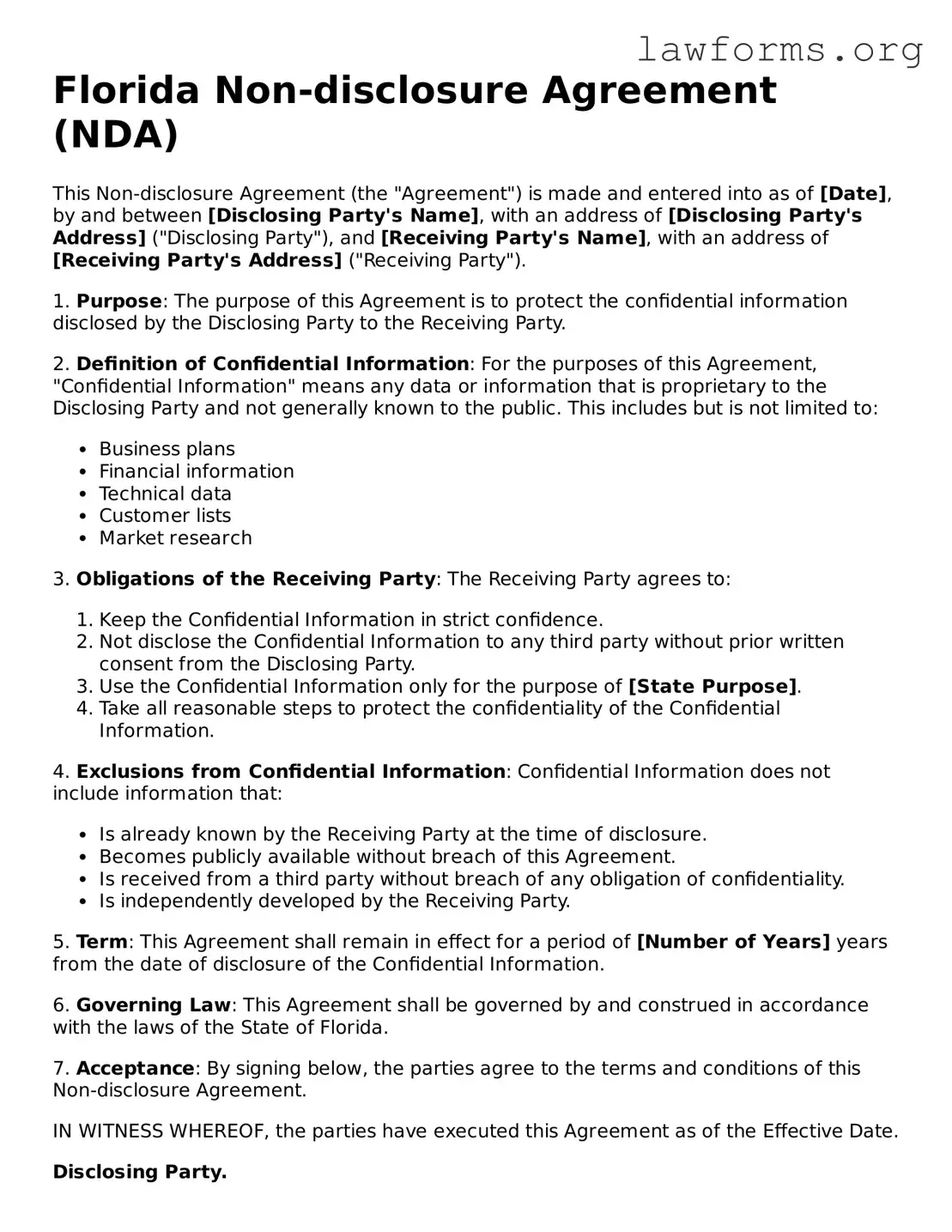Florida Non-disclosure Agreement (NDA)
This Non-disclosure Agreement (the "Agreement") is made and entered into as of [Date], by and between [Disclosing Party's Name], with an address of [Disclosing Party's Address] ("Disclosing Party"), and [Receiving Party's Name], with an address of [Receiving Party's Address] ("Receiving Party").
1. Purpose: The purpose of this Agreement is to protect the confidential information disclosed by the Disclosing Party to the Receiving Party.
2. Definition of Confidential Information: For the purposes of this Agreement, "Confidential Information" means any data or information that is proprietary to the Disclosing Party and not generally known to the public. This includes but is not limited to:
- Business plans
- Financial information
- Technical data
- Customer lists
- Market research
3. Obligations of the Receiving Party: The Receiving Party agrees to:
- Keep the Confidential Information in strict confidence.
- Not disclose the Confidential Information to any third party without prior written consent from the Disclosing Party.
- Use the Confidential Information only for the purpose of [State Purpose].
- Take all reasonable steps to protect the confidentiality of the Confidential Information.
4. Exclusions from Confidential Information: Confidential Information does not include information that:
- Is already known by the Receiving Party at the time of disclosure.
- Becomes publicly available without breach of this Agreement.
- Is received from a third party without breach of any obligation of confidentiality.
- Is independently developed by the Receiving Party.
5. Term: This Agreement shall remain in effect for a period of [Number of Years] years from the date of disclosure of the Confidential Information.
6. Governing Law: This Agreement shall be governed by and construed in accordance with the laws of the State of Florida.
7. Acceptance: By signing below, the parties agree to the terms and conditions of this Non-disclosure Agreement.
IN WITNESS WHEREOF, the parties have executed this Agreement as of the Effective Date.
Disclosing Party.
Signature: _____________________________
Name: [Disclosing Party's Name]
Date: _____________________________
Receiving Party.
Signature: _____________________________
Name: [Receiving Party's Name]
Date: _____________________________
